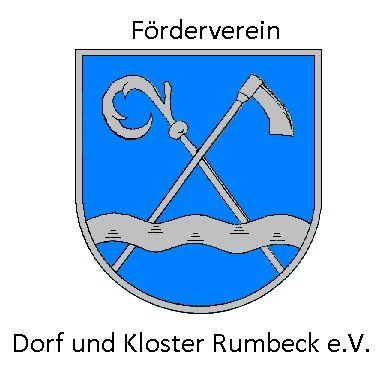Church of St. Nicholas
ARCHITECTURE OF THE CHURCH
The Rumbeck Collegiate Church is a simple, rectangular, three-aisled hall church with five bays without a choir. Its construction probably began immediately after the founding of the monastery in 1190. The dating of the sleeper timbers used in the roof structure confirms that the church building was completed in 1205 ( /- 1 year) at the latest. After that, no structural changes were made. The only exception are the windows,
which have been adapted over the centuries to suit contemporary tastes. Remains of large Gothic windows can still be seen today behind the high altar and behind the organ.
Due to the lack of stiffening elements and the associated static risks, the construction of the vault remains without successor, which makes the Rumbeck church a particularly valuable architectural example.
INTERIOR
The late Romanesque church had a completely different appearance inside until 1825. The so-called nuns' gallery reached into the middle of the third bay, dividing the room into a lower and an upper church. The choir stalls, an altar and the organ were located on it. Remains of the choir benches from the second half of the 16th century stand today on both sides of the high altar.
The construction of the gallery was preserved in 1698/99, when the collegiate church received its uniform furnishings in typical Westphalian Baroque style, which still exist today. The large altarpiece of the high altar is flanked by the figures of the order's founder Norbert (left) and the Evangelist John (right), who was venerated as a patron alongside the Virgin Mary, who crowns the altar, until the 14th century. Only then did St. Nicholas become the main patron of the church. The painting on the second floor of the high altar shows him, where, according to legend, he is flanked by two Premonstratensian canons and brings three murdered boys back to life.
THE HISTORICAL KLAUSING ORGAN
The solemn design of the liturgy with music and singing is still very important in the Premonstratensian Order today. So it is not surprising that the collegiate church was given an organ very early on. When Hinrich Klausing was commissioned to build a new instrument around 1700, he used valuable pipes and significant parts of the case of the existing organ and built a unit with 8-10 registers on a manual with an attached pedal. Even today we can listen to the sounds of the oldest pipes of the Praestant 4' from the middle of the 15th century, which stands in the facade. In 1825 the nuns' gallery was shortened and the organ was subsequently rebuilt. Engelbert Ahmer from Letmathe added a second manual and an independent pedal to the instrument. The Hinrich Klausing organ was last restored in 2006 by the Hillebrand company (Altwarmbüchen). With the reconstructed bellows and the modified mean-tone tuning, it should come very close to the original sound of 1700 today.
CHRISTIAN LIFE YESTERDAY AND TODAY
For a period of 640 years, when entering the church, one could hear at least two choir sisters praying and singing at any hour of the day or night. The uninterrupted prayer vigil before the Blessed Sacrament, the solemn choir singing at the set times of the day and night, and the daily celebration of the Eucharist formed the basis of the daily routine at Rumbeck Abbey. After the monastery was closed during the secularization in 1804, the church initially became a branch church of the Arnsberg provostship. With a certificate dated August 2, 1858, St. Nicholas Church was elevated to the status of the "Parish and Mother Church of Rumbeck." When the last pastor, Walter Lüdtke-Wöstmann, who had already retired, died in 2005, daily services ended after more than 800 years. Today, St. Nicholas Rumbeck is part of the provost parish of St. Laurentius Arnsberg. The Kolping community, Caritas, and a dedicated parish team maintain parish life on site. The regular Eucharist celebration takes place on Saturdays at 6:30 p.m. There are also other services and concerts on the historic Hinrich Klausing organ.
















